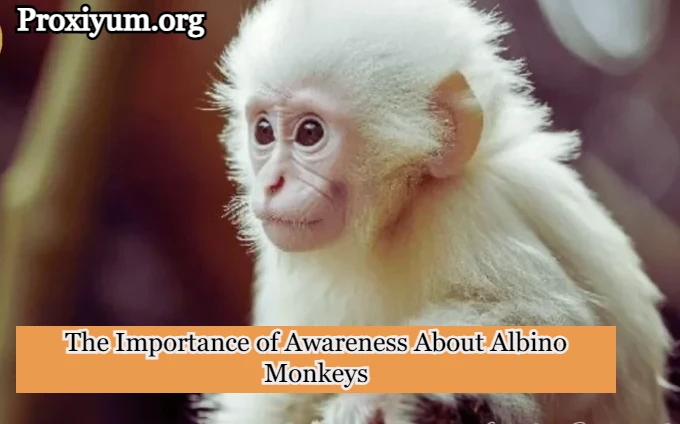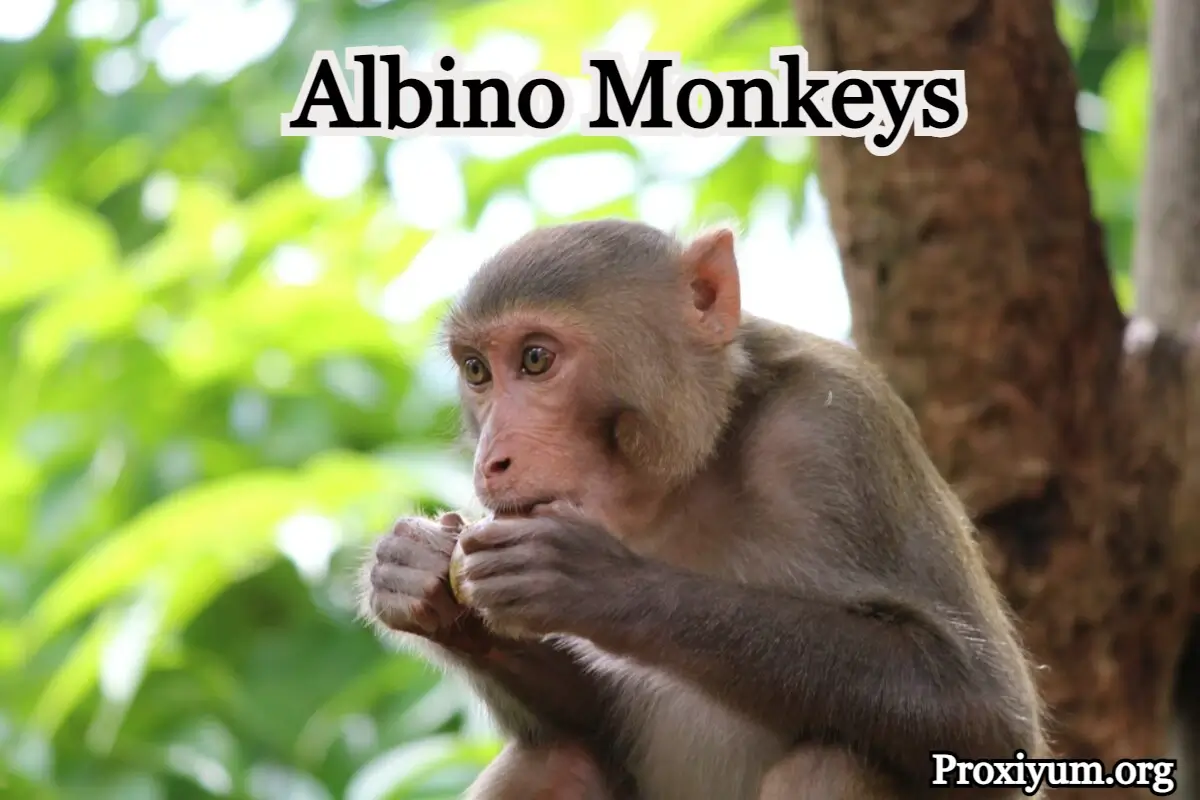Introduction
Albinism, a rare genetic condition that results in the lack of melanin pigment, affects both humans and animals, including primates. While albino monkeys are a fascinating occurrence, they are extremely rare.
Their strikingly white or pale skin, hair, and pink eyes make them stand out from their typically dark-furred relatives, leading to a variety of social and survival challenges.
What Causes Albinism in Monkeys?
Albinism is caused by a genetic mutation that affects the production of melanin, the pigment responsible for coloring skin, hair, and eyes.
This mutation occurs in genes related to melanin synthesis, leading to a complete or partial lack of pigment.
Albinism can be inherited when both parents carry the recessive gene responsible for the condition, though it is rare in wild populations of primates.
Physical Characteristics of Albino Monkeys
Albino monkeys are easily recognizable due to their unique appearance. They have white or very light-colored fur, pinkish skin, and red or light blue eyes.
The lack of melanin also makes them extremely sensitive to sunlight, which can cause skin burns and eye damage.
Albino monkeys often suffer from vision problems, including photophobia (sensitivity to light) and reduced sharpness of vision, which can impact their daily activities.
Different Species of Monkeys Affected by Albinism

Albinism can occur in various species of monkeys, though it remains a rare phenomenon across all primate families. Some species where albino individuals have been observed include:
- Capuchin monkeys: Known for their intelligence, capuchin monkeys have been documented with albinism in both the wild and captivity.
- Macaques: Albino macaques have been spotted in the wild, where they face unique challenges in terms of survival.
- Spider monkeys: These agile primates have also shown occasional cases of albinism, though such sightings are extremely rare.
How Rare Are Albino Monkeys?
Albinism is an uncommon occurrence in primates, with only a handful of documented cases worldwide. In the wild, the condition is even rarer, as albino individuals face significant survival challenges.
In captivity, where albino monkeys are better protected and receive specialized care, the chances of seeing an albino monkey are slightly higher.
However, even in zoos, albino monkeys remain a rarity, drawing attention and fascination from visitors and researchers alike.
Behavioral Differences in Albino Monkeys
Albino monkeys often behave differently from their pigmented counterparts. Their vision problems and sensitivity to light can affect how they interact with their environment and other monkeys.
In some cases, albino individuals may be more cautious or hesitant, especially in brightly lit environments where they struggle with visibility.
These behavioral differences can influence their ability to find food, avoid predators, and establish social bonds within their groups.
Social Challenges Faced by Albino Monkeys
In the wild, albino monkeys may face social ostracization due to their different appearance. Other monkeys in the group may treat them differently, sometimes rejecting them or excluding them from social activities.
This isolation can be detrimental to their well-being, as monkeys are highly social animals that rely on group dynamics for protection and survival.
Albino Monkeys in Captivity
Albino monkeys in captivity receive special care to manage their unique needs. Zoos and research facilities often provide shaded environments, protective measures against the sun, and medical care for their skin and vision issues.
Albino monkeys in these settings have a much better chance of living a healthy and longer life compared to their counterparts in the wild.
Notable examples include albino monkeys in various zoos that have become popular attractions due to their rarity and distinctive appearance.
Health Issues in Albino Monkeys
The lack of melanin in albino monkeys leads to a range of health issues. Their skin is highly sensitive to ultraviolet (UV) light, which increases the risk of sunburn and skin cancer.
Additionally, their vision is often impaired, making it difficult for them to navigate their environment, especially in bright conditions.
Albino monkeys may also have a weakened immune system, which can make them more susceptible to infections and other health complications.
Conservation Efforts for Albino Monkeys
While there are no specific conservation programs focused solely on albino monkeys, general efforts to protect primate habitats and reduce poaching indirectly benefit these rare individuals.
Zoos and wildlife organizations play a key role in protecting albino monkeys, ensuring they receive the care and attention they need to thrive in captivity.
Raising awareness about albino monkeys and the challenges they face is also essential for their conservation.
Cultural Significance of Albino Monkeys
Albino animals, including monkeys, have been viewed with fascination and reverence in various cultures. In some societies, albino monkeys are seen as mystical or symbolic creatures, representing purity or spiritual significance.
On the other hand, some cultures associate albino animals with bad luck or omens, which can lead to fear or harm against them.
Albino Monkeys and Scientific Research
Albino monkeys provide a unique opportunity for scientific research, particularly in the fields of genetics and primatology.
Studying the genetic mutations that cause albinism in monkeys can offer insights into the condition in both animals and humans.
Additionally, research on albino monkeys can help scientists understand how genetic diversity affects the health and survival of primates in the wild.
The Importance of Awareness About Albino Monkeys

Educating the public about albino monkeys and the challenges they face is crucial for promoting empathy and conservation efforts.
By raising awareness about the condition and its impact on primates, people can better understand the importance of protecting these rare individuals and their habitats.
The Future of Albino Monkeys
The future of albino monkeys is uncertain, especially as their survival in the wild is threatened by habitat destruction and human activity.
Conservation efforts focused on preserving genetic diversity in monkey populations are essential to ensuring the continued existence of albino individuals.
With ongoing research and public support, there is hope for albino monkeys to thrive in both the wild and captivity.
Conclusion
Albino monkeys are a rare and captivating phenomenon in the animal kingdom. Despite their unique appearance, they face significant challenges, from health issues to social isolation.
By understanding and protecting these extraordinary primates, we can ensure that albino monkeys continue to inspire fascination and contribute to our understanding of genetics and biodiversity.
